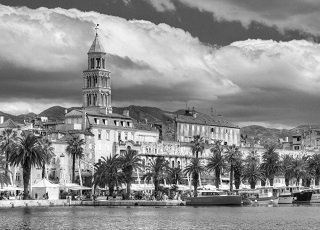SPLIT, CROATIA
Croatia's second-largest city, Split (Spalato in Italian) is a great place to see Dalmatian life as it’s really lived. Always buzzing, this exuberant city has just the right balance of tradition and modernity. Step inside Diocletian’s Palace (a Unesco World Heritage site and one of the world’s most impressive Roman monuments) and you’ll see dozens of bars, restaurants and shops thriving amid the atmospheric old walls where Split life has been humming along for thousands of years.[1]
How to get to Split

Air - Split airport
Split Airport is in Kaštela, 24km northwest of central Split. In summer, dozens of airlines fly here from all over Europe (including Austrian Airlines, British Airways, easyJet, Norwegian Air Shuttle and Scandinavian Airlines).

Shuttle
City Bus 37 & 38 The regular Split–Trogir bus stops near the airport every 20 minutes. The journey takes 50 minutes from the local bus station on Domovinskog Rata, making it a slower option than the shuttle but also cheaper.

Taxi

Train
Getting around in Split

Taxi

Bus - www.promet-split.hr

Bicycle - www.rent-a-bicycle-split.com/rent-city-bike-split/
Interesting facts

Practical tips – Need to know
Language: Croatian
Currency: Kuna (HRK)
Time zone: GMT +1
Country code: +385
Voltage: 230 V
Electrical socket: Plug C, F
Tourist Contacts: (+385-21) 34 56 06
Internet Resources: http://www.visitsplit.com
General emergency number: 112
